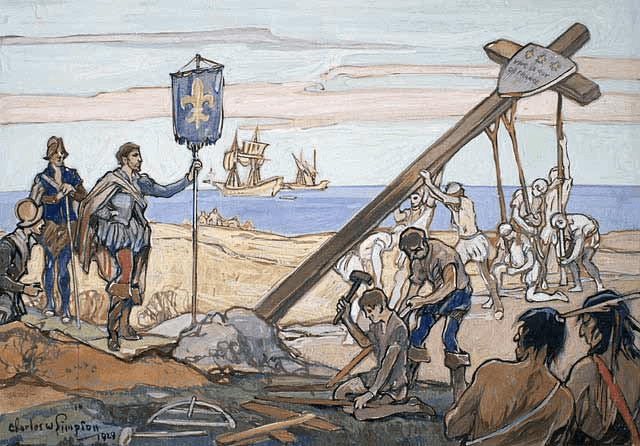After the discovery of Christopher Columbus in 1492, several explorers from European countries (France, England, Portugal & Spain) continued to search for shipping routes to Asia. Jacques Cartier was an explorer from France. But instead of reaching Asia, Jacques Cartier reached the Gulf of St. Lawrence in 1534. When he arrived, he planted a cross in Gaspé and declared that the territoryA territory is an area of land, or sometimes of sea, that we can say "belongs"... (or land) belonged to the King of France.
THE DISCOVERY OF CANADA
In 1535, Jacques Cartier returned to the site of his first expedition and decided to explore the new territoryA territory is an area of land, or sometimes of sea, that we can say "belongs"... in more detail. This time, he discovered the mouth of the St. Lawrence River. He also entered what we now call Canada. He met Indigenous People in the village of Stadacona and then continued on his way, up the river, which he called the “Canada Trail”. He went as far as Hochelaga (an Iroquoian village that was located on or near present-day Mount Royal in Montreal). He also discovered many rivers such as the Saguenay, Saint-Maurice and Richelieu.
CANADA, A PASSAGE TO ASIA?
Cartier thought that the St. Lawrence River would lead him to Asia. During his explorations, he understood that Canada was a very vast territoryA territory is an area of land, or sometimes of sea, that we can say "belongs"... and that France could benefit from its many resourcesResources are anything taken from the earth or nature that people need, use, and are "valued".....
AuthorAuthor - A person who writes something Auteur - Une personne qui écrit quelque chose: Alexandre Lanoix. RECITUS. Translated by LEARN






